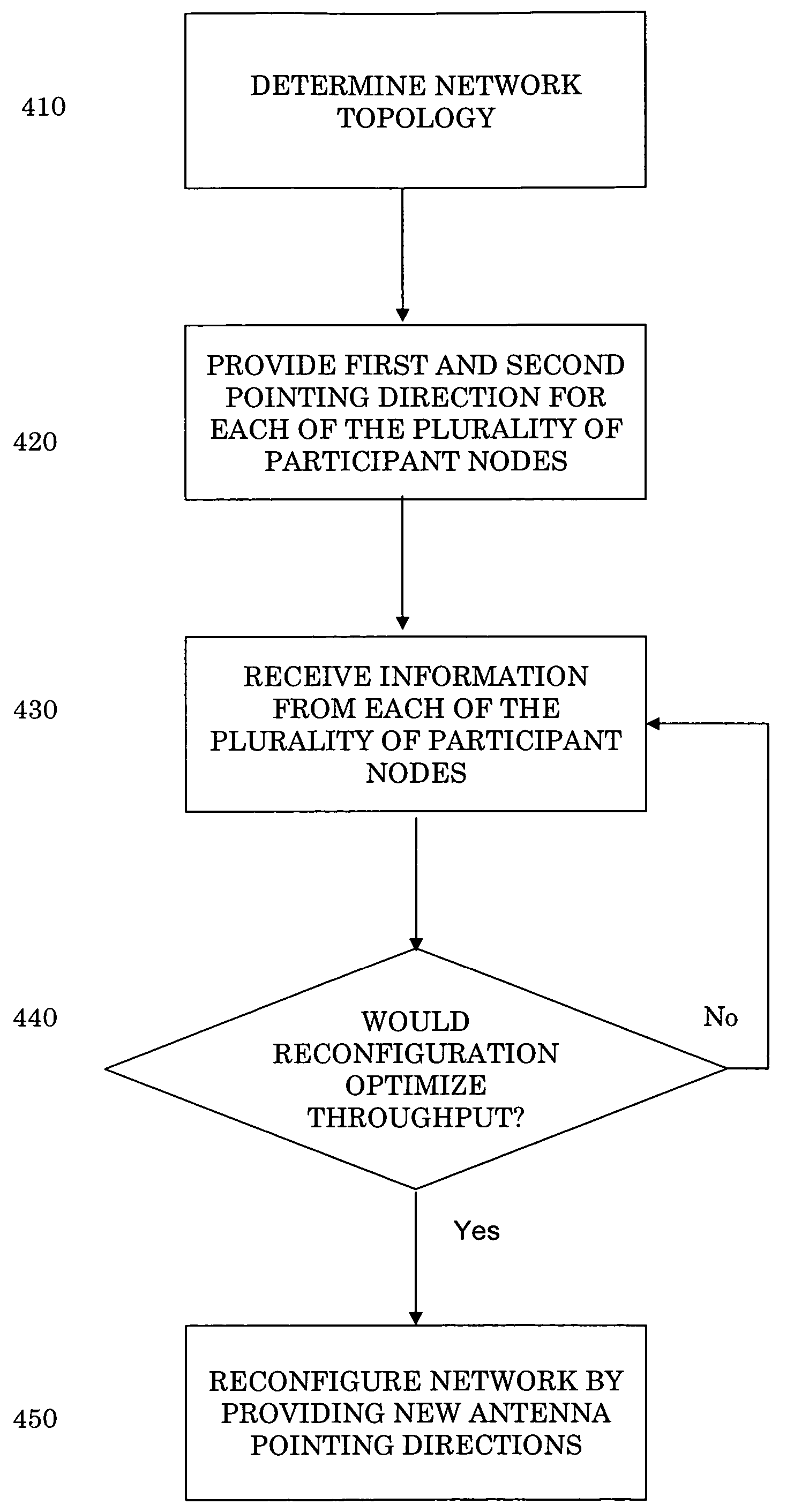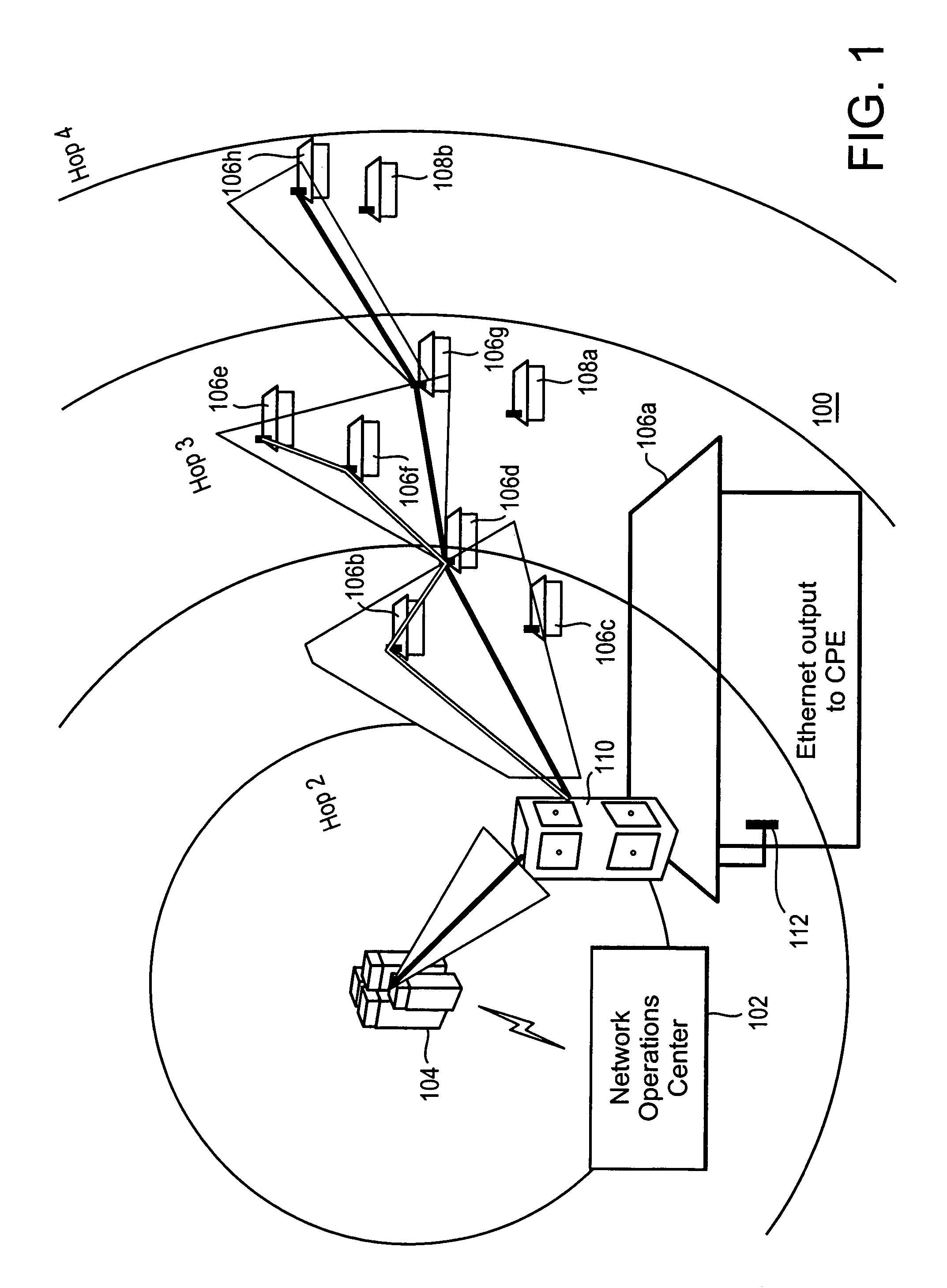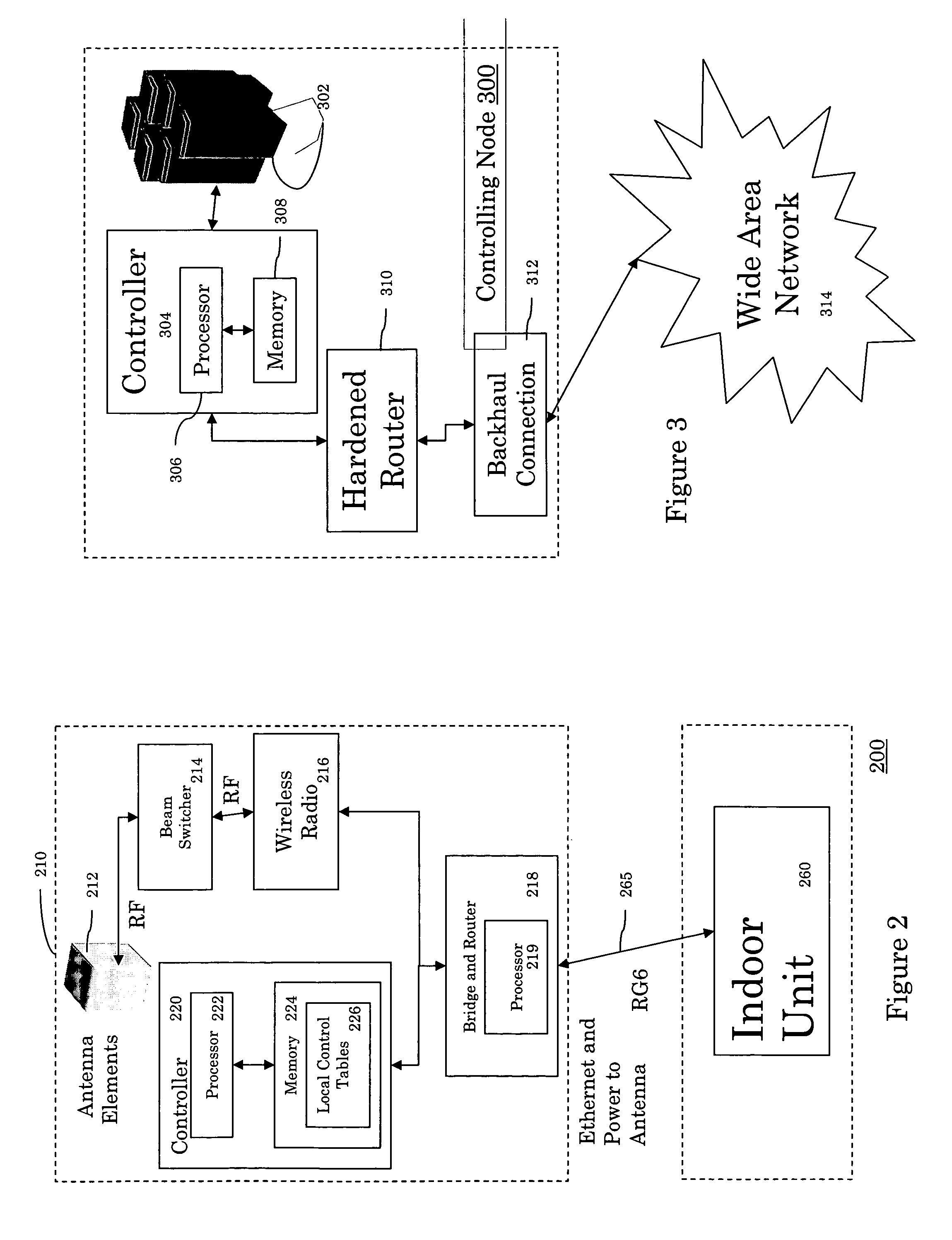Managed microcell wireless mesh network architecture
a micro-cell wireless and mesh network technology, applied in power management, data switching networks, wireless commuication services, etc., can solve the problem of low bandwidth density, achieve the effect of managing capacity and reliability of the network, maximizing the performance of each node and the entire network, and reducing the number of nodes
- Summary
- Abstract
- Description
- Claims
- Application Information
AI Technical Summary
Benefits of technology
Problems solved by technology
Method used
Image
Examples
Embodiment Construction
[0022]FIG. 1 illustrates a network 100 in accordance with exemplary embodiments. The network includes a network operations center 102, an anchor point 104, and a plurality of subscriber nodes 106a-106h (herein referred to as participant nodes). Participant node 106h can be referred to as a “leaf” participant node because it has only one connection to the network which is used for both transmitting and receiving packets. Also illustrated in FIG. 1 is a plurality of non-subscribers premises 108a and 108b, the non-subscriber premises are not part of the network. Each participant node includes an electronically steerable-beam antenna and a participant controller 110 (illustrated in FIG. 1 as a single element), and indoor unit 112 for connection to the customer premises equipment (CPE) such as a computer, telephone and television.
[0023]The anchor point 104 provides a connection between the network 100 and other communications networks such as cable or satellite television networks, the p...
PUM
 Login to View More
Login to View More Abstract
Description
Claims
Application Information
 Login to View More
Login to View More - R&D
- Intellectual Property
- Life Sciences
- Materials
- Tech Scout
- Unparalleled Data Quality
- Higher Quality Content
- 60% Fewer Hallucinations
Browse by: Latest US Patents, China's latest patents, Technical Efficacy Thesaurus, Application Domain, Technology Topic, Popular Technical Reports.
© 2025 PatSnap. All rights reserved.Legal|Privacy policy|Modern Slavery Act Transparency Statement|Sitemap|About US| Contact US: help@patsnap.com



